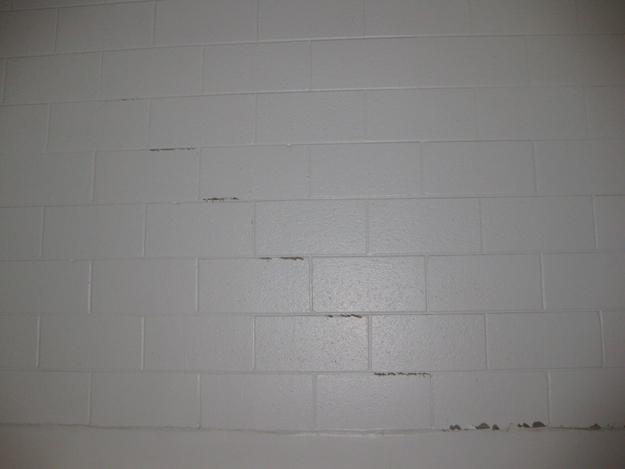
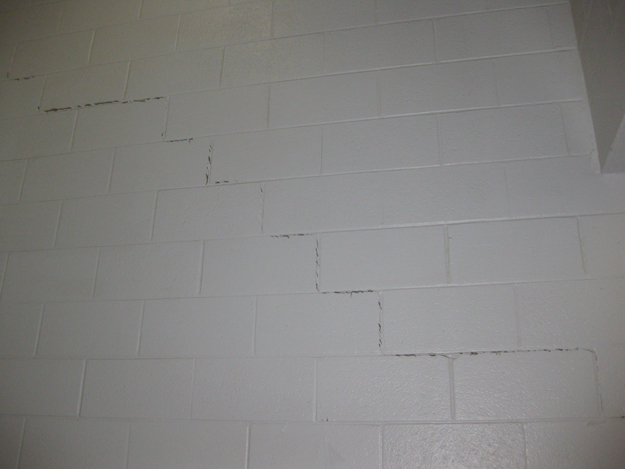
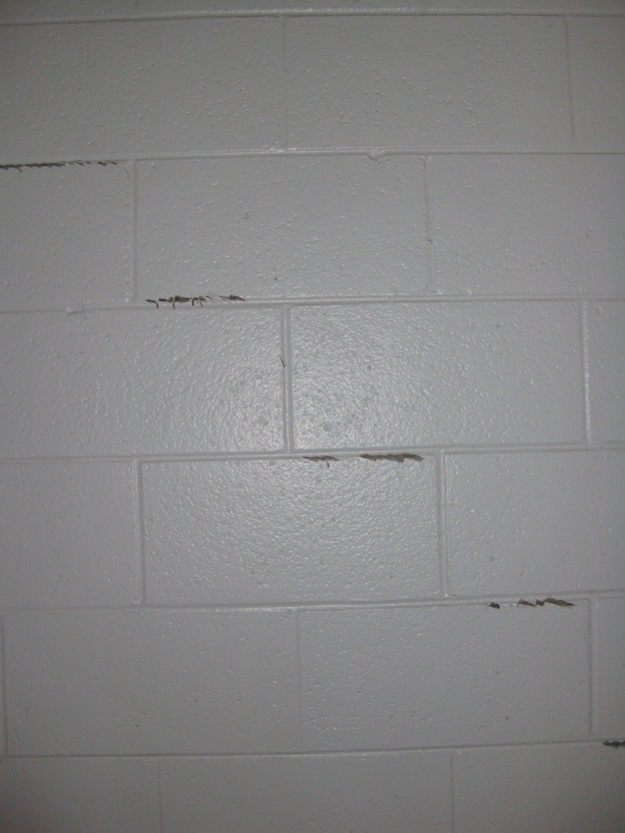
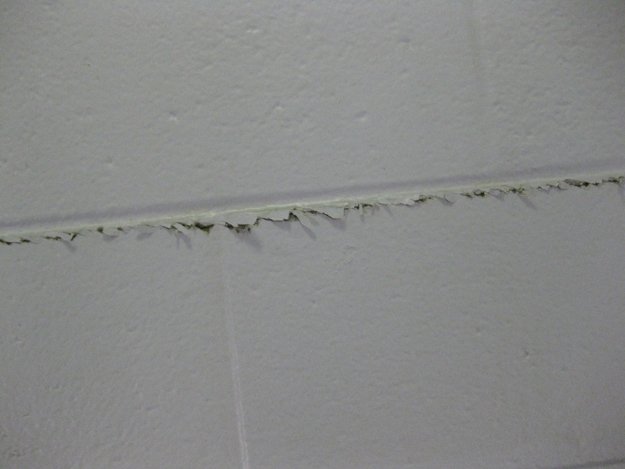
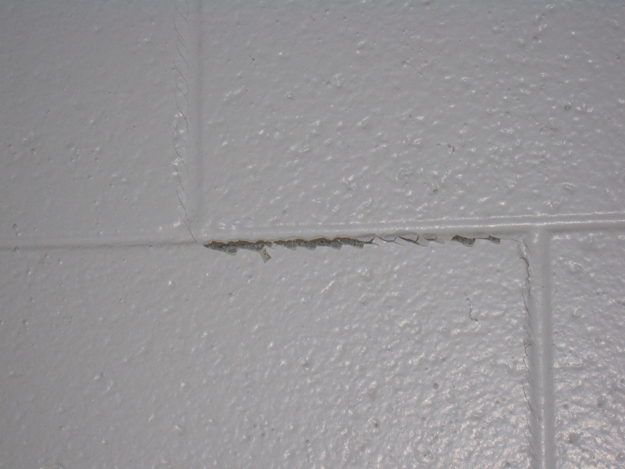
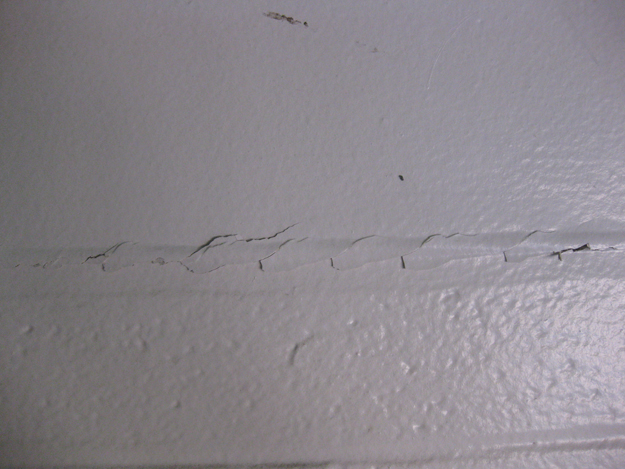
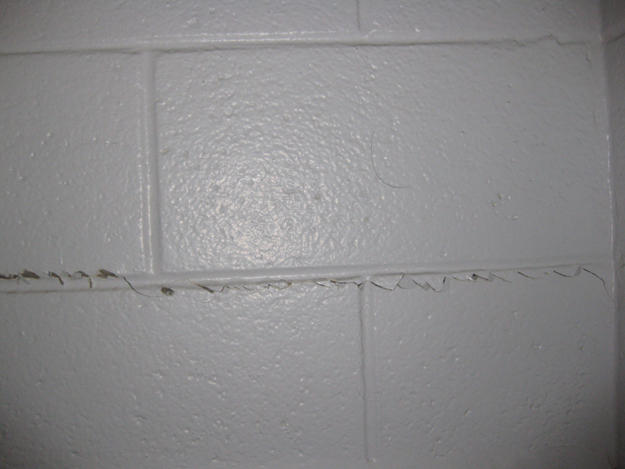
These are all in the northern stairwell between the 2nd and 3rd floors of the Godwin Building here on the Annandale campus of NOVA. The cement blocks have clearly separated along their mortared edges, and the disruption of the paint layer in a series of en echelon fractures reveals that deeper structural issue. I find this a bit scary.
I have no information about what, if anything, is being done here to fix this issue or cover it up. Any advice to pass on to my supervisors?

I suspect there’s hidden damage like this all over Virginia, Maryland, and the District.
Is this a load-bearing wall?
Yes and no – some is on the north (outer) wall of the building. Some is on interior walls parallel and perpendicular to the north wall.
the paint fractured but I don’t see any permanent displacemant of the bricks. Perhaps the wall deformed elastically and there is no cause for worry?
But why is it focused along the mortared joins between the cinderblocks? – that localization suggests brittle deformation to me. I would be surprised to find plastic deformation at such low temperatures and presumably high strain rates.
You’re right, though about there being no perceptible offset in the cinderblocks’ current state. I guess I was just thinking about the structure being overall weakened as a result of this event – more susceptible to the next shock, whenever it might come (perhaps never).
I don’t think that is so serious. Apparently the concrete blocks have been fractured, rather than the cement (which would have been better, and easier to fix), but any construction engineer should find the way of injecting some cement if needed. As Terry pointed out, if that is a load-bearing wall, it should be studied in depth. If it is not, I don’t find it very worrying.
In Europe most of constructions are done with concrete and bricks, rather than gypsum walls as it happens over there (as far as I know), and this kind of fractures are not strange at all during the first years of existence of a building, due to natural differential settlement.
Hopefully all this damage is not serious!
Cheers,
Jorge
Nothing to worry about, there is a bit of steel in those walls to keep them from shifting too much from settling and little quakes. Now if you could see sin waves in the wall, that would be a reason to worry. Repaint is my advice.
Hard to tell exactly what damage was suffered by the concrete or cinder block wall since the paint covers it up (are they concrete or cinder block?). The mortar joints are always the weak spot in these walls. The pattern of cracking sure seems to follow the mortar joints suggesting some degree of movement at that location causing paint cracking. The usual consequence of that structurally is compromised mortar, which makes the wall weaker in the event of another shake. Cracks in mortar are typically less serious than cracks in the blocks themselves.
In retrofitting old unreinforced masonry buildings here in California, the mortar always gets checked for its current integrity – it is not unusual for a building to become hazardous from compromised mortar joints but not have any apparent damage from a simple look at the wall.
Ultimately, what really matters for the integrity of that concrete block wall is the presence of steel reinforcements inside the blocks. I cant tell the age of your building, nor do I know practices in your area concerning the initial installation of steel to strengthen the concrete block wall. The damage here appears cosmetic primarily, with perhaps some degree of compromise to the mortar.